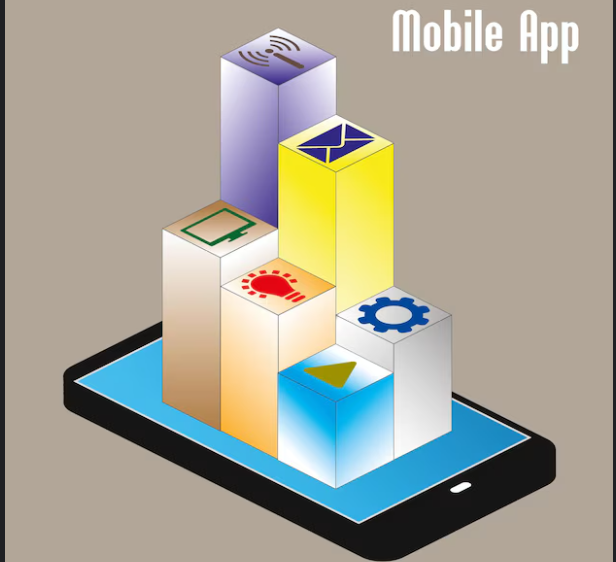A Tech stack is the collection of technologies that developers use to build an application. It includes the programming languages, tools, and platforms that help create both the front-end (what users see) and the back-end (how the app works). Choosing the right tech stack is very important because it affects how your app performs, how easy it is to maintain, and how fast you can develop new features.
Every app is built using a different tech stack depending on the company’s needs. For example, some companies choose tools that are cheap and easy to use when they’re just starting out, while others go for more powerful solutions that can grow with the company. The best tech stack for you will help your team work better and faster while making sure your app is reliable and able to handle more users over time.
What is a Tech Stack and Why You Need One
A tech stack is a combination of tools and technologies used to build software applications. It includes things like programming languages, frameworks, and databases that help the app function properly. Understanding a tech stack is important because it helps developers choose the right tools for their app based on the needs of the project and the team.
Every company or developer picks their tech stack based on what their application needs. For example, some might choose tools that are easy to use when building a simple app, while others pick tools that can handle a larger number of users and grow with the business. By choosing the right tech stack, companies can ensure that their apps run smoothly and meet customer needs.
When building an app, the tech stack plays a key role in how fast the app can be built and how it will perform later. A well-chosen tech stack will help developers make an app that is both efficient and scalable. It is also important for the development team to understand how different parts of the tech stack work together to create a seamless user experience.
The Basic Components of a Tech Stack
A tech stack is made up of different parts that work together to build an app. These parts are usually divided into two categories: the front-end and the back-end. The front-end is everything the user sees and interacts with, like buttons, images, and text. The back-end is what makes everything work behind the scenes, like servers, databases, and APIs.
Popular Components of a Tech Stack:
- Frontend Frameworks: React, Vue.js, Angular
- Backend Frameworks: Ruby on Rails, Django, Node.js
- Databases: MySQL, MongoDB, PostgreSQL
- Servers: Apache, Nginx, AWS
By understanding the different parts of a tech stack, developers can choose the right tools to make sure their app works well. The right tools make it easier to build and maintain apps. They also ensure that users have a smooth experience when interacting with the app.
How to Choose the Right Tech Stack for Your App

When choosing a tech stack, you need to consider the type of app you are building, how much traffic you expect, and how easy it is to maintain. It’s important to pick tools that fit your goals. For example, if you’re building a small website, a simple tech stack might be enough. But if you’re building a large application, you might need a more complex stack that can handle a lot of users at once.
Before choosing, make sure the tools are scalable, which means they can grow as your app grows. You also need to think about the development team’s skills. Choosing a tech stack that the team is familiar with can help speed up development. Additionally, pick tools that are supported by a large community so you can find help and resources easily.
- Factors to Consider:
- Type of app (small or large)
- Scalability for future growth
- The skills of the development team
- Popular and well-supported tools
A good tech stack is like the foundation of a house: it needs to be strong and able to support the app as it grows and changes.
Tech Stack vs. Frameworks: What’s the Difference?
People often mix up tech stacks with frameworks. While they are related, they are not the same thing. A tech stack includes all the tools you need to build an app, while a framework is just one part of the tech stack. Frameworks are collections of code that help developers organize their app and avoid writing repetitive code.
Frameworks can be used in both the front-end and back-end of an app. For example, a front-end framework like React helps developers build the user interface quickly, while a back-end framework like Django helps organize how the app connects to databases and handles requests.
Choosing the right frameworks for your tech stack can make a big difference in how fast your app is built and how easy it is to maintain. While frameworks help organize and simplify the coding process, they are only a small part of a larger tech stack that includes servers, databases, and other tools.
Popular Tech Stack Examples for Different Types of Apps

Different types of apps need different tech stacks. For example, an e-commerce website might require a tech stack that handles payments and product inventory, while a social media app needs a stack that can handle large amounts of user data and real-time updates.
Popular Tech Stacks for Different Apps:
- E-commerce app: Node.js, React, MongoDB, Stripe
- Social media app: Ruby on Rails, React, PostgreSQL, Redis
- Mobile app: Swift (iOS), Kotlin (Android), Firebase
The choice of tech stack depends on the needs of the app. A social media app, for example, needs to handle millions of users and real-time data, so it requires a stack that supports high-performance databases and fast data processing. On the other hand, a small business website might need a simpler tech stack that is easier to manage.
How a Tech Stack Can Affect Your App’s Performance

A well-chosen tech stack can improve your app’s performance, making it faster and more efficient. The right stack helps handle large amounts of data and users, ensuring that the app runs smoothly. If your tech stack includes fast servers and efficient databases, your app will respond quickly to users, which leads to a better user experience.
Choosing a tech stack that supports your app’s performance goals is crucial. For instance, a tech stack with powerful caching tools can make an app load faster by storing data temporarily so it doesn’t have to be fetched again every time. Other performance tools, like content delivery networks (CDNs), can help deliver content to users faster by storing data in locations closer to them.
When you focus on performance in your tech stack, your app is more likely to meet user expectations and handle growth without slowing down.
The Role of Databases in Your Tech Stack

Databases are an important part of any tech stack, as they store all the information that your app needs to run. Whether it’s user data, product information, or order details, databases keep everything organized and easy to access. Choosing the right database for your tech stack depends on how you want to organize and query the data.
There are two main types of databases: relational and non-relational. Relational databases, like MySQL and PostgreSQL, organize data in tables with rows and columns, making it easy to search for specific pieces of information. Non-relational databases, like MongoDB, store data in a more flexible format, which is useful for apps that need to handle large amounts of unstructured data.
By selecting the right database, you ensure that your app can scale and manage data efficiently as it grows.
Tech Stack and Scalability: Building for the Future
Scalability is one of the most important factors to consider when choosing a tech stack. As your app grows and attracts more users, your tech stack needs to handle increased traffic and data without slowing down. A scalable tech stack allows you to easily add more resources, like servers or databases, to keep up with demand.
Cloud services, like AWS and Google Cloud, offer scalable solutions where you can automatically increase your capacity as needed. This makes it easy to grow your app without worrying about infrastructure. It’s also important to consider how your tech stack can evolve as your business expands, adding new features or supporting more users.
Building a scalable tech stack from the start helps ensure that your app remains responsive and reliable as it grows.
Conclusion:
Choosing the right tech stack is a big decision when building an app. It helps determine how the app will perform, how easy it is to maintain, and how well it will grow in the future. By picking the right tools for both the front-end and back-end, developers can create an app that works smoothly and meets user needs. The tech stack should be chosen carefully based on the project, the team’s skills, and the app’s goals.
In the end, a strong tech stack helps developers create apps that are not only functional but also scalable and easy to manage. When you pick the right combination of tools, your app can grow with your business and keep delivering a great experience to users. Remember, a good tech stack is like the foundation of a house—it needs to be strong and flexible enough to support whatever comes next!



